Okkoota ಒಕ್ಕೂಟ : Arts House, Melbourne
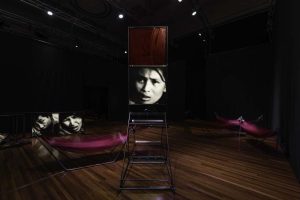
Loss in the Aftermath, 2018
steel, mechanical components, photographs, perspex
dimensions variable
Installation View, Arts House 2023. Steel supplied by Andrew Huynh Photo: Matthew Stanton
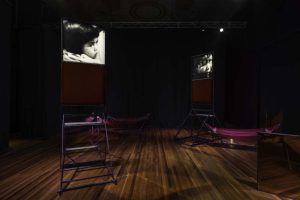
Loss in the Aftermath, 2018
steel, mechanical components, photographs, perspex
dimensions variable
Installation View, Arts House 2023. Steel supplied by Andrew Huynh Photo: Matthew Stanton
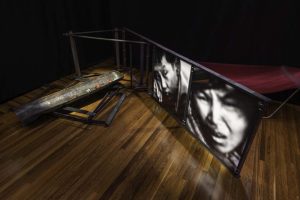
Loss in the Aftermath, 2018
steel, mechanical components, photographs, perspex
dimensions variable
Installation View, Arts House 2023. Steel supplied by Andrew Huynh Photo: Matthew Stanton
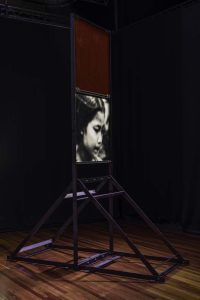
Loss in the Aftermath, 2018
steel, mechanical components, photographs, perspex
dimensions variable
Installation View, Arts House 2023. Steel supplied by Andrew Huynh Photo: Matthew Stanton

Loss in the Aftermath, 2018
steel, mechanical components, photographs, perspex
dimensions variable
Installation View, Arts House 2023. Steel supplied by Andrew Huynh Photo: Matthew Stanton
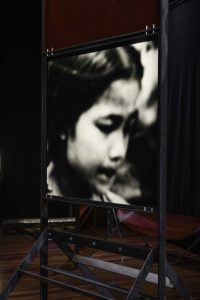
Loss in the Aftermath, 2018
steel, mechanical components, photographs, perspex
dimensions variable
Installation View, Arts House 2023. Steel supplied by Andrew Huynh Photo: Matthew Stanton
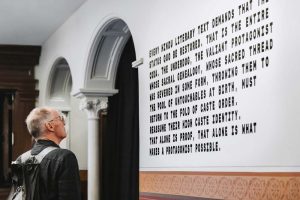
Okkoota, ArtsHouse, 2023
Photo: Jacinta Keefe
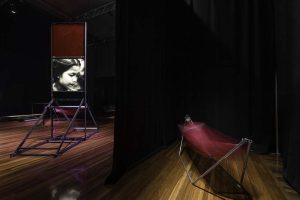
Loss in the Aftermath, 2018
steel, mechanical components, photographs, perspex
dimensions variable
Installation View, Arts House 2023. Steel supplied by Andrew Huynh Photo: Matthew Stanton
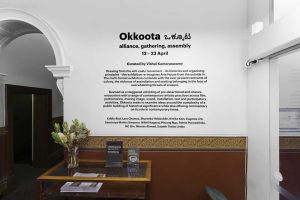
Okkoota, ArtsHouse, 2023
Photo: Matthew Stanton
Phuong Ngo
12 - 23 Apr 2023
In Okkoota ಒಕ್ಕೂಟ, a roster of local and international artists draw on a range of artforms and activities to imagine what an institution of historical significance can offer its community in the contemporary present. The history of curation has long depended on a top-down model, but Dalit artist-curator Vishal Kumaraswamy has never held to that. Here he has brought together some of the most critical artistic voices in the subcontinent and the diaspora to flip the North Melbourne Town Hall on its head. Across the venue these artists re-vision what the collective voice of artistic communities and practices can do for a civic site.
Phuong Ngo says of his installation Loss in the Aftermath;
‘At the end of every war the statistics are released; a representation of totality at the conclusion of a conflict; a roll call of dollars, damage and deaths. Loss in the Aftermath (2018), a responsive work to Herbert Schmalz’s Too Late (1884-86), takes this economic assessment and extends it by examining ongoing and inherited trauma, through post war displacement and loss.
Following the fall of Saigon in 1975, 1 to 2 million people fled the country as boat people. Of this number an estimated 500,000 to 1 million never saw land again. Expanding on themes and concepts explored in earlier works such as, Article 14.1 (Next Wave Festival, 2014) and My Dad the People Smuggler (Counihan Gallery, 2013), Loss in the Aftermath examines concepts of ongoing loss in a post conflict environment through the experiences of the Vietnamese people following the end of the Vietnam War and rise of communism.
The work combines photography and sculptural installation to illustrate the ongoing sense of loss that is still felt several generations into the Vietnamese Diaspora. A series of 6 portraits re-photographed from found online images of Vietnamese boat people, loom large, anguished, drained, fearful and weary in front of the viewer. Cropped in by the lens of the camera these burry portraits illustrate the emotions of post war trauma, the loss of place, home and country. Mounted in the center of the gallery they are contemplative images, these are the survivors. At the back of their heads reflective red acrylic pushes back against their history and past hardships, literally reflecting on ‘Too Late’.
To the front of the portraits, sits a number of red empty hammocks. A ubiquitous object in Vietnam; from rocking children to sleep to rest stops and bars on the side of the road; hammocks are a part of daily life in Vietnam, even making their way to refugee camps following the fall of Saigon. Automated to rock independently, their emptiness representing the loss of life at sea, forever unoccupied by those who never saw land again.
Loss in the Aftermath is a work that has been created as a memorial to those lost at sea and to honour the experiences of survivors. People like my parents and the countless others who have gone on to raise my generation after suffering so much hardship in the post war environment.
Despite its melancholy, Loss in the Aftermath is a testament to the political, economic and social freedoms attained by those who got on boats all those years ago. It is a contribution to Australian political and creative discourse, questioning historic and contemporary policies affecting those seeking the rights we so freely take for granted.’ (Phuong Ngo, 2023)
Okkoota ಒಕ್ಕೂಟ is part of Arts House’s Equity—Builder where an artist-curator from a marginalised community is handed over the keys, spaces and resources for a curatorial project across two years in an effort to renew the relationship between the institution and independents. Artists include Eddie Abd, Lara Chamas, Shareeka Helaluddin, Kirtika Kain, Eugenia Lim, Sancintya Mohini Simpson, Nikhil Nagaraj, Phuong Ngo, Rahee Punyashloka, NC Qin, Moonis Shah, Subash Thebe Limbu
